How to Choose the Right Rug Size

For open concept layouts or multipurpose spaces, rugs also help separate and define each area.
So how do you choose the right size rug for your room? A rug that is too small looks silly and almost uninviting. A rug that is too large swallows the room and makes it feel smaller.
Our room-by-room tips are here to help so when it’s time to roll out the rug, it’s a perfect fit.
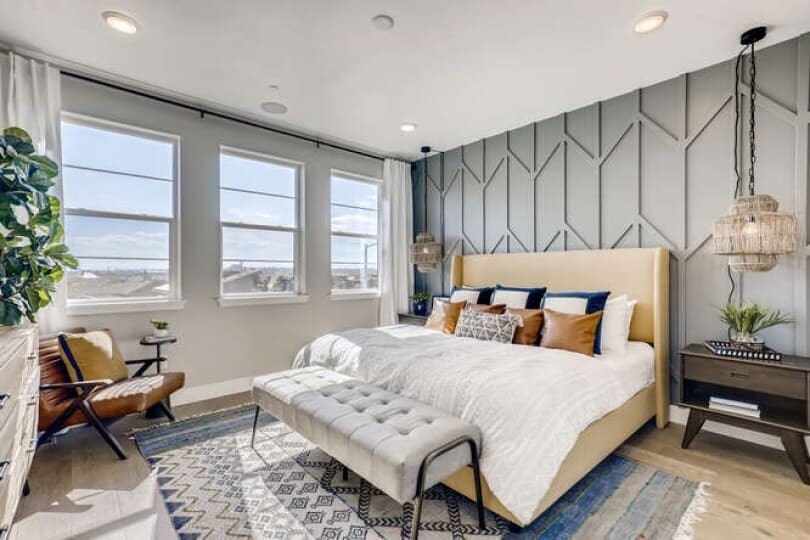
All Spaces
In most rooms, there are simple rules that always apply: Leave at least six inches between the end of the rug and the walls (or counters in the kitchen), leave all furniture legs off the rug in busy areas like entryways and hallways, and let the space and furniture dictate the rug size.
Bigger is Better
The most common mistake people make when selecting an area rug is opting for one that is too small for the space. Chances are, you’ve invested in beautiful hardwood or laminate flooring and it doesn’t feel right to cover it up. The right area rug will actually enhance the beauty of your flooring, not hide it.
Start by reviewing your furniture configuration, not the size of the room. Some layouts look better with a certain amount of the flooring visible around the edge of the room. If you’re torn between sizes, go with the larger option. A few inches can make all the difference between a cohesive look or a disjointed feel.
Read the Room
The shape of your rug should almost always echo the shape of the room and the furniture that will be placed on it. A long room needs the rug to be oriented lengthwise. This may impact how the pattern or design of the rug displays in your room, so it’s an important factor to consider.
“See” the Rug in the Space
To feel more confident in your selection, use painter’s tape to mock the rug size and placement before you buy. You can see the outline of where the rug would end, helping you see how a rug of that size would fit into your space. If you’re happy with the result, you’re ready to go shopping!
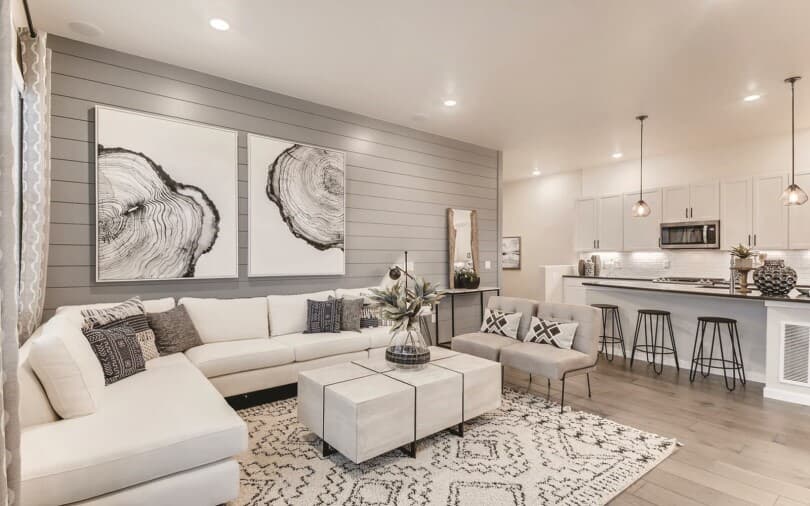
In the Living Room
While the couch may be the centerpiece of most living rooms, it’s the rug that pulls it all together. This makes it important for the dimensions of the rug to fill up the main seating area and ground the conversation space.
There are three main layouts: all furniture legs on the rug, just the front legs on the rug, or all furniture – except for the coffee table – off the rug. If you choose a layout with any part of the sofa on the rug, the rug should extend at least 6” on each side for proper scale.
For something more fun and visually interesting, try an oval or round rug. As long as the shape supports the furniture in the room, have fun with it!
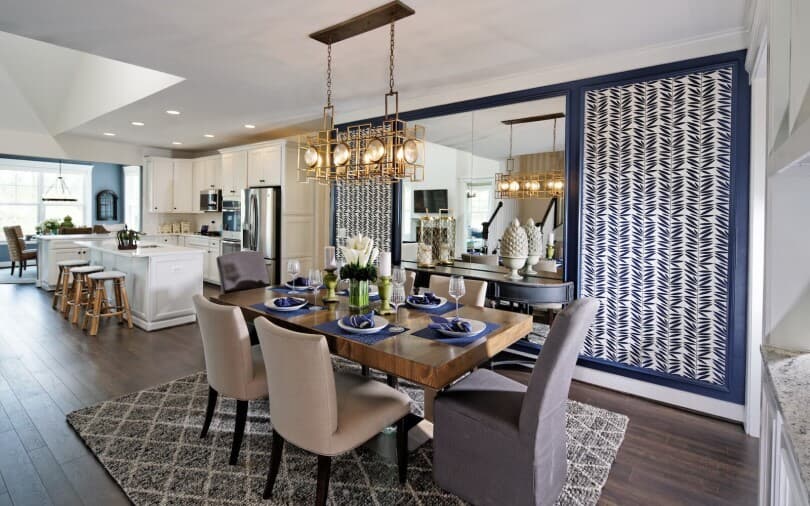
In the Dining Area
Just like the living room, the rug should comfortably fit the furniture on it – not just for visual scale, but for safety’s sake! You don’t want anyone to trip getting in and out of their seat. You want to make sure the chairs have enough room to fit even when they’re pulled out from the table.
The rug should extend at least 24”, but not more than 36”, beyond all sides of the table. This goes for both rectangular and round rugs. If your table has extendable leaves, consider getting a bigger rug.
If you want to be confident that you’re choosing the right area rug size for your dining room table, simply add 60 inches to the length and width of your table. For instance, a 40” x 60” table should be paired with at least an 8’ x 10’ rug but would work best with a 9’ x 12’ rug. For round tables, add at least 60 inches to the diameter.
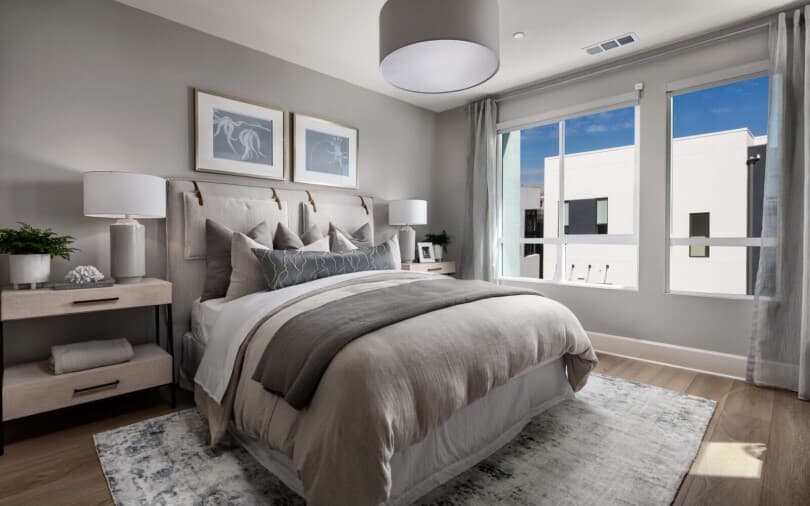
In the Bedroom
As the focal point of the room, your bed should be the base for rug placement and the determining factor for size. Not only does a rug give the room a more finished look, your feet have a soft spot to land each morning.
There are three main options: all bed legs on the rug, 2/3 of the bed on the rug, or runners on each side. Choosing all legs on the rug becomes an all-inclusive endeavor. Accompanying furniture like nightstands or a bench at the foot of the bed should fit on the rug, but not pieces along other walls like your dresser. The rug should extend at least 18” – 24” past the edge of your bed without encroaching on any main walkways.
The most popular option is to place 2/3 of your bed on the rug. It doesn’t extend up to the nightstands, but still allows for 18” – 24” of room on the sides and past the foot of the bed. Typically, an 8’ x 10’ rug works best with queen beds and 9’ x 12’ for king.
The most flexible option is to choose two runners for either side of the bed. This is a great choice if larger rugs don’t fit in your room or if your layout is asymmetrical. The most important consideration is scale: The runner shouldn’t extend beyond the bed, but should be wider than your nightstand. The runners should be placed on either side of the bed, but not touching the furniture.
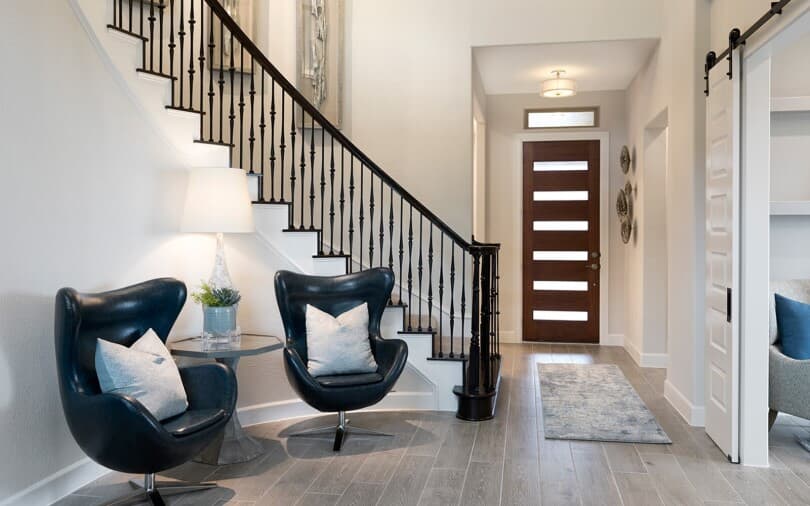
In the Hallway or Entryway
These are great areas to have fun with your rug. Since they don’t typically have furniture that will be placed on top, you can have fun playing with the size and shape as long as it feels like it “fits” the space.
Runners are the go-to choice for hallways. It’s best not to clutter these narrow corridors so make sure you find a rug that is slim enough to show the flooring on either side. Use a non-slip rug pad to prevent your runner from scratching the floor and slipping when you’re walking on it.
Using a rug in the entryway creates a welcoming ambiance and gives an immediate introduction to your home’s style. Let the width of your front door dictate the width of the rug. The shape of the space will dictate the choice of round, rectangular, or a runner. Be sure to check the pile height to ensure your door will clear the rug when it’s opened.
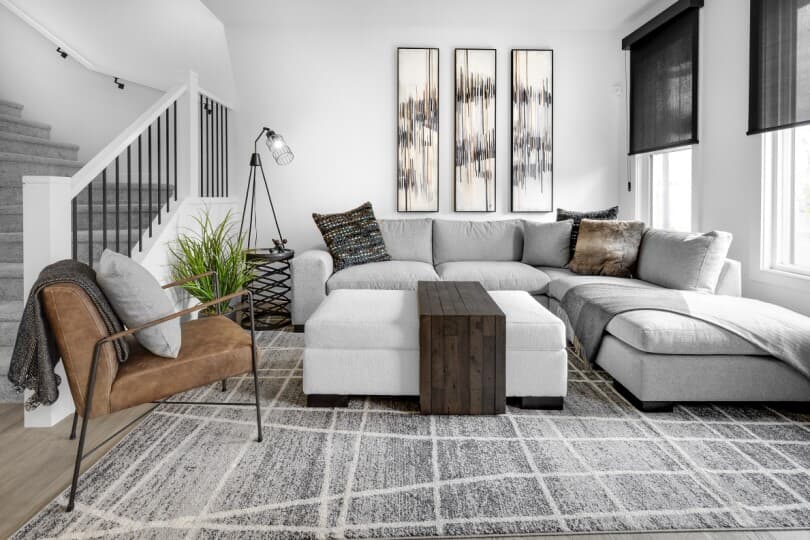
Lastly, know that there is no hard and fast rule when it comes to decorating your own home. Only you can determine what is best for your home because you’re the one who has to live in it! The main thing is to take your time with the decision since investing in a quality rug can be a major expense. Your home should be a reflection of your style and taste, so if you feel like breaking any of the rules, go for it!
Discover More Home Design Tips
Looking for more home design tips? Be sure to follow the Brookfield Residential blog for more design advice, homebuying insights, mortgage tips, and more. Explore where we build and connect with our sales team when you’re ready to learn more. We’ll be expecting you!
